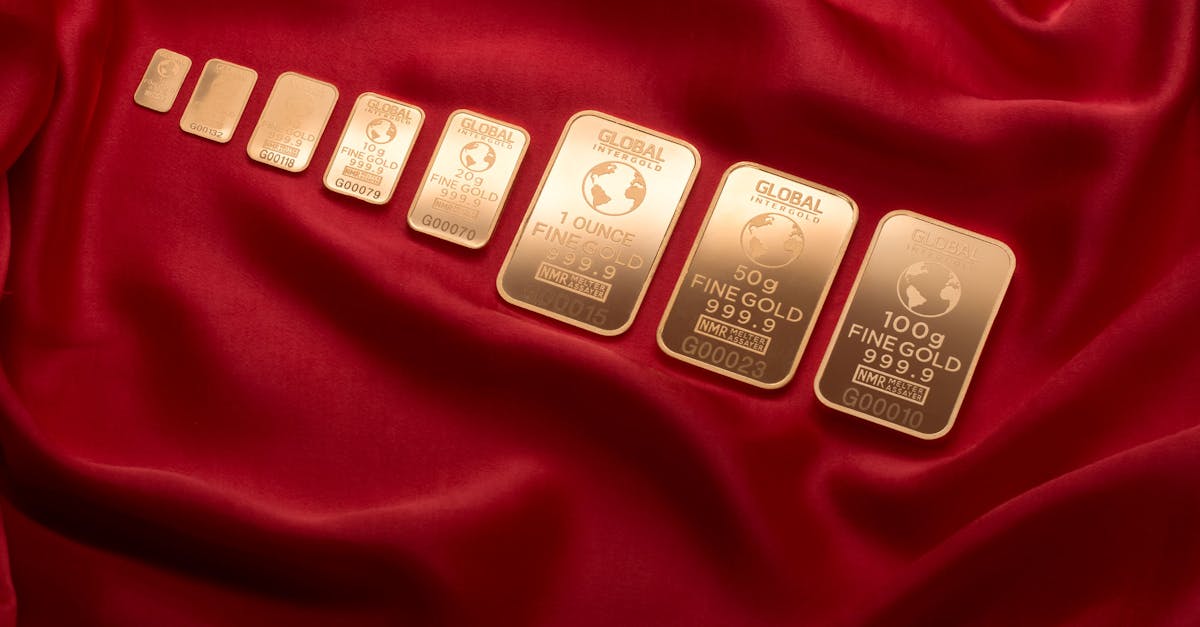Unlocking the Value of Gold: A Modern Guide to ETFs and Mutual Funds

Gold has been a valuable asset for centuries, and its allure hasn’t faded in the modern era. While physically holding gold bars or coins was once the only way to invest in this precious metal, today, investors have a more convenient and accessible option: gold-backed financial products like exchange-traded funds (ETFs) and mutual funds. These investment vehicles offer a hassle-free way to own gold without the challenges of storage and security.
As you embark on your investment journey, it’s crucial to understand the landscape of gold-backed financial products. This guide will delve into the world of ETFs and mutual funds, exploring their unique characteristics, benefits, and risks. Whether you’re a seasoned investor or just starting out, this comprehensive overview will equip you with the knowledge you need to make informed decisions about investing in gold.
Investing in gold through ETFs and mutual funds provides a gateway to diversification, inflation hedging, and potential capital appreciation, all while offering varying levels of flexibility and management. Discover the nuances of these financial products and make the choice that aligns with your investment strategy and goals.
Key Insights
- Gold-backed financial products, like ETFs and mutual funds, offer a convenient and accessible way to invest in gold without the challenges of storing and securing physical gold.
- Gold-backed financial products provide several benefits to investors, including diversification, inflation protection, and potential capital appreciation
- ETFs are a good choice for investors who want to trade gold like a stock and who have a higher risk tolerance.
- Mutual funds are a better choice for investors who want a more hands-off approach and who have a longer time horizon.
- When choosing a gold-backed financial product, it is important to consider your investment objectives, risk tolerance, and time horizon.
1. Gold-Backed Financial Products: A Modern Way to Own Gold
Gold-backed ETFs are traded on stock exchanges, much like stocks, providing investors with real-time exposure to the gold price. These ETFs are backed by physical gold held in secure vaults, ensuring that their value is directly linked to the underlying metal. Mutual funds, on the other hand, are managed by professional fund managers who invest in a diversified portfolio of gold-related assets, including gold bullion, mining stocks, and futures contracts.
The convenience of gold-backed financial products cannot be overstated. Unlike physical gold, which requires secure storage and insurance, these investments can be bought and sold with just a few clicks. Moreover, ETFs offer the flexibility of intraday trading, allowing investors to capitalize on short-term price movements. Mutual funds, with their professional management and diversification, provide a more hands-off approach for long-term investors seeking exposure to gold.
2. Exchange-Traded Funds (ETFs): A Flexible Option

Gold-backed exchange-traded funds (ETFs) have gained immense popularity among investors seeking real-time exposure to the gold market. ETFs offer a unique blend of liquidity and transparency, making them a flexible option for both short-term and long-term investors.
The liquidity of gold-backed ETFs is a major advantage. Unlike physical gold, which can take time to buy or sell, ETFs can be traded throughout the trading day, just like stocks. This allows investors to quickly adjust their positions or take advantage of market movements. The transparency of ETFs is another key feature. ETFs are required to disclose their holdings on a daily basis, providing investors with a clear understanding of the underlying assets backing the fund. This transparency helps investors make informed decisions and reduces the risk of fraud or manipulation.
Overall, gold-backed ETFs offer a compelling proposition for investors seeking a flexible and transparent way to invest in gold. Their liquidity and transparency make them a popular choice for both active traders and long-term investors alike.
3. Mutual Funds: A Managed Approach
Diversification is a key benefit of gold-backed mutual funds. These funds typically invest in a range of gold-related assets, including physical gold, gold mining stocks, and gold futures contracts. This diversification helps to reduce the overall risk of the investment, as the performance of different assets can vary over time.
Professional management is another advantage of gold-backed mutual funds. The fund managers responsible for these funds have extensive knowledge of the gold market and are constantly monitoring economic and market conditions. They make strategic decisions about the fund’s portfolio, aiming to maximize returns while managing risk.
Gold-backed mutual funds are well-suited for long-term investors who seek exposure to gold but prefer a more hands-off approach. These funds provide a convenient and professionally managed way to invest in gold, without the need for active trading or market timing.
4. Benefits of Gold-Backed Financial Products

Investing in gold through financial products, such as ETFs and mutual funds, offers several key benefits that make gold an attractive asset class for investors. Diversification is one of the primary advantages of gold. Gold has a low correlation to other asset classes, such as stocks and bonds, making it a valuable addition to a diversified portfolio. This diversification can help to reduce the overall risk of an investment portfolio and improve its risk-adjusted returns.
Gold is also considered a hedge against inflation. When inflation erodes the value of paper currencies, gold tends to retain its purchasing power. This is because gold is a real asset with intrinsic value, unlike fiat currencies, which are subject to inflation and devaluation. As a result, gold can help to preserve the value of an investment portfolio during inflationary periods.
Finally, gold has the potential for capital appreciation. Over the long term, the price of gold has tended to rise, driven by factors such as increasing demand from investors, central banks, and jewelry buyers. While gold is not immune to price fluctuations, its historical performance suggests that it can be a valuable asset for long-term investors seeking capital appreciation.
5. Risks Associated with Gold-Backed Financial Products
Storage costs are another potential risk for investors in physical gold. If you choose to hold physical gold, you will need to pay for secure storage, which can add to the overall cost of your investment. Additionally, there is the risk of theft or loss of your physical gold.
Management fees are a risk associated with gold-backed mutual funds. These funds charge annual fees to cover the costs of management and administration. While these fees are typically low, they can eat into your returns over time.
6. Choosing the Right Gold-Backed Product for Your Needs
Choosing the right gold-backed financial product depends on your individual investment objectives, risk tolerance, and time horizon. ETFs and mutual funds offer different features and benefits, so it’s important to understand the key differences before making a decision.
ETFs are a good choice for investors who want to trade gold like a stock. ETFs offer intraday liquidity, meaning you can buy and sell them throughout the trading day. This flexibility makes ETFs suitable for short-term trading strategies. ETFs also tend to have lower expense ratios than mutual funds, making them a more cost-effective option.
Mutual funds are a better choice for investors who want a more hands-off approach. Mutual funds are managed by professional fund managers who make investment decisions on your behalf. This active management can be beneficial for investors who do not have the time or expertise to manage their own gold investments. Mutual funds also offer diversification, as they typically invest in a range of gold-related assets.
Ultimately, the best gold-backed financial product for you will depend on your specific investment needs and preferences. Consider your investment objectives, risk tolerance, and time horizon before making a decision.
7. Conclusion: Gold-Backed Financial Products in the Modern Investment Landscape
Gold-backed financial products, such as ETFs and mutual funds, play an important role in the modern investment landscape. These products offer investors a convenient and accessible way to invest in gold, without the challenges of storing and securing physical gold.
Gold-backed financial products provide several benefits to investors, including diversification, inflation protection, and potential capital appreciation. Gold has a low correlation to other asset classes, such as stocks and bonds, making it a valuable addition to a diversified portfolio. Gold is also considered a hedge against inflation, as its value tends to rise when inflation erodes the value of paper currencies. Additionally, gold has the potential for capital appreciation over the long term, driven by factors such as increasing demand from investors and central banks.
When choosing a gold-backed financial product, it is important to consider your investment objectives, risk tolerance, and time horizon. ETFs are a good choice for investors who want to trade gold like a stock and who have a higher risk tolerance. Mutual funds are a better choice for investors who want a more hands-off approach and who have a longer time horizon.
What is the difference between a gold ETF and a gold mutual fund?
Gold ETFs are traded on stock exchanges, like stocks, and offer real-time exposure to the gold price. Gold mutual funds, on the other hand, are managed by professional fund managers who invest in a diversified portfolio of gold-related assets, including physical gold, gold mining stocks, and gold futures contracts.
Which is better, a gold ETF or a gold mutual fund?
The choice between a gold ETF and a gold mutual fund depends on your investment objectives, risk tolerance, and time horizon. ETFs are a good choice for investors who want to trade gold like a stock and who have a higher risk tolerance. Mutual funds are a better choice for investors who want a more hands-off approach and who have a longer time horizon.
What are the risks of investing in gold-backed financial products?
The risks of investing in gold-backed financial products include market volatility, storage costs, and management fees. Market volatility is the risk that the price of gold will fluctuate, which can lead to losses if the price of gold declines. Storage costs are the costs of storing physical gold, which can add to the overall cost of your investment. Management fees are the fees charged by mutual funds to cover the costs of management and administration.
Key Insights
| Key Insight | Description | |—|—| | Gold-backed financial products offer a convenient and accessible way to invest in gold. | These products provide investors with exposure to the gold market without the challenges of storing and securing physical gold. | | Gold-backed financial products provide several benefits to investors. | These benefits include diversification, inflation protection, and potential capital appreciation. | | ETFs are a good choice for investors who want to trade gold like a stock and who have a higher risk tolerance. | ETFs offer intraday liquidity and lower expense ratios than mutual funds. | | Mutual funds are a better choice for investors who want a more hands-off approach and who have a longer time horizon. | Mutual funds are managed by professional fund managers who make investment decisions on behalf of investors. | | When choosing a gold-backed financial product, it is important to consider your investment objectives, risk tolerance, and time horizon. | This will help you choose the product that is right for you.

0 responses to “Gold-Backed Financial Products: A Guide to ETFs and Mutual Funds”